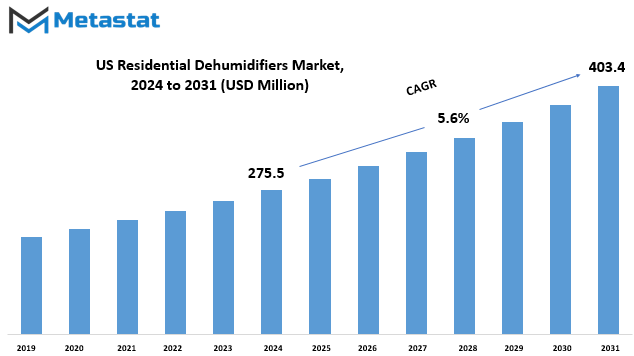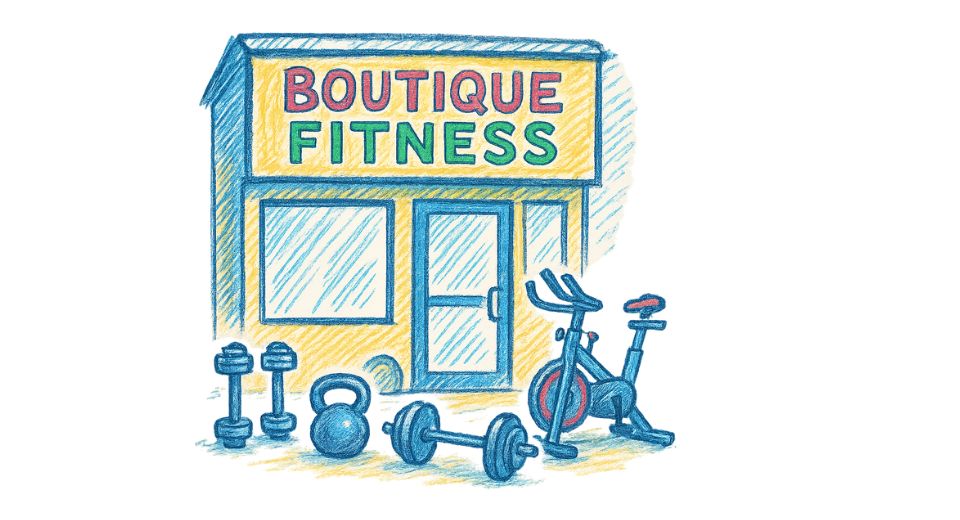MARKET OVERVIEW
The US Residential Dehumidifiers market represents a dynamic and burgeoning sector within the broader home appliances. As households increasingly prioritize comfort and health, the demand for effective humidity control solutions has seen a significant uptick. This burgeoning market is characterized by a diverse range of products and a palpable surge in consumer awareness regarding the adverse effects of excess moisture within living spaces.
Within the United States, the residential dehumidifiers market has witnessed substantial growth, propelled by factors such as climate variations, lifestyle changes, and an expanding knowledge base on indoor air quality. Homeowners are now, more than ever, attuned to the potential hazards associated with elevated humidity levels, including mold growth, structural damage, and respiratory issues. This awareness has catalyzed a surge in the adoption of residential dehumidifiers as indispensable appliances, ensuring a conducive and healthy living environment.
One of the defining features of this market is the extensive variety of dehumidifier options available to consumers. From compact and portable units designed for smaller living spaces to high-capacity systems catering to expansive homes, the market caters to a diverse array of consumer needs. This diversity is further underscored by the incorporation of advanced technologies, such as smart sensors, energy-efficient mechanisms, and user-friendly controls, enhancing the overall user experience.
Manufacturers in the US Residential Dehumidifiers market is engaged in a constant race to innovate, introducing features that not only address the core function of moisture removal but also align with contemporary lifestyle preferences. Energy efficiency has emerged as a pivotal consideration for consumers, driving manufacturers to develop dehumidifiers that not only excel in performance but also contribute to sustainable living practices.
The competitive landscape of this market is marked by established brands and new entrants vying for consumer attention. Advertising and marketing efforts play a crucial role in shaping consumer perceptions, as companies strive to differentiate their products based on performance, durability, and technological advancements. This competitive dynamism benefits consumers by offering a wide array of choices, fostering a market where quality and innovation are key drivers.
Furthermore, the evolving regulatory landscape, including energy efficiency standards and environmental considerations, has a profound impact on product development and market trends. Manufacturers are compelled to align their offerings with these regulations, pushing the industry toward more sustainable and eco-friendly solutions. This regulatory framework not only ensures product compliance but also serves as a catalyst for innovation within the market.
The US Residential Dehumidifiers market stands as a vibrant sector driven by a confluence of factors, including changing climate patterns, heightened consumer awareness, and a commitment to healthier living environments. As technology continues to advance and consumer preferences evolve, the market is poised for further growth and innovation, making residential dehumidifiers an integral component of modern household appliances.
US Residential Dehumidifiers market is estimated to reach $403.4 Million by 2031; growing at a CAGR of 5.6% from 2024 to 2031.

GROWTH FACTORS
The growth of the US Residential Dehumidifiers market is influenced by several key factors. One prominent driver is the rising awareness concerning indoor air quality and the impact of climate change and weather variations. People are becoming more cognizant of the need to maintain a healthy indoor environment, leading to an increased demand for dehumidifiers.
However, alongside these positive factors, challenges also exist. High energy consumption is a notable concern, posing a potential obstacle to market growth. Additionally, in developed regions, the market faces saturation, meaning that further expansion may encounter limitations in these well-established areas.
Despite these challenges, there are opportunities on the horizon. The integration of dehumidifiers with smart home systems is identified as a promising avenue for future market development. This integration aligns with the growing trend of smart home technologies, presenting a mutually beneficial prospect for both consumers and the market.
The US Residential Dehumidifiers market is on a trajectory influenced by a balance of factors. Awareness about indoor air quality and climate change acts as a catalyst for growth, while challenges such as high energy consumption and market saturation require careful navigation. The integration with smart home systems emerges as a beacon of opportunity, reflecting the adaptability of the market to evolving consumer preferences and technological advancements.
MARKET SEGMENTATION
By Type
In the US residential dehumidifiers, the market is divided into distinct segments based on the type of dehumidifiers available. One such category is the Whole House Dehumidifier. In 2023, this segment saw a valuation of 143.1 USD million.
Moving on to another segment, we have Portable Dehumidifiers. These compact and mobile units, valued at 73.3 USD million in 2023, provide a convenient solution for those seeking localized moisture control within their homes.
Additionally, the Crawl Space & Basement Dehumidifier segment holds its own significance in the market, with a valuation of 44.3 USD million in 2023. This specific type of dehumidifier caters to spaces like crawl spaces and basements, addressing the unique moisture challenges associated with such environments.
In examining these segments, it becomes evident that the market for residential dehumidifiers is diverse, offering solutions tailored to different needs within households. The Whole House Dehumidifier ensures comprehensive moisture control throughout the entire home, while Portable Dehumidifiers provide flexibility in addressing specific areas. On the other hand, the Crawl Space & Basement Dehumidifier focuses on the requirements of these below-grade spaces.
This segmentation not only reflects the variety in consumer preferences but also highlights the industry’s responsiveness to the diverse demands of homeowners. As individuals seek customized solutions for moisture-related issues, the market continues to evolve, presenting a dynamic landscape for residential dehumidifiers. The value assigned to each segment in 2023 underscores the economic significance and consumer adoption of these different types of dehumidifiers in the quest for a more comfortable and moisture-free living environment.
By Dehumidifiers Type
In the US Residential Dehumidifiers market, the various types of Whole House Dehumidifiers play a pivotal role. These dehumidifiers are designed to tackle excessive moisture levels in residential spaces, enhancing the overall comfort and quality of indoor air.
To begin with, the market is segmented into different types of Whole House Dehumidifiers. The first category is Split-System Whole-House Dehumidifiers, which operate by dividing the dehumidification process into distinct components. This segmentation allows for a more targeted and efficient removal of excess moisture from the air, contributing to a healthier living environment.
Next up, we have Ducted Whole-House Dehumidifiers. These units are integrated into the home’s existing ductwork, seamlessly working alongside the heating, ventilation, and air conditioning (HVAC) systems. By doing so, they ensure a comprehensive and integrated approach to dehumidification throughout the entire house.
Another noteworthy category is Ventilating Whole-House Dehumidifiers. These dehumidifiers are designed to improve overall air circulation while effectively reducing humidity levels. By enhancing ventilation, they not only address moisture concerns but also contribute to a fresher and more pleasant indoor atmosphere.
Each type of Whole House Dehumidifier brings its own set of advantages, catering to different preferences and requirements of homeowners. The Split-System option offers targeted control, the Ducted variant seamlessly integrates into existing systems, and the Ventilating type promotes enhanced air circulation.
The US Residential Dehumidifiers market presents a diverse array of options under the umbrella of Whole House Dehumidifiers. Whether it’s the Split-System, Ducted, or Ventilating variant, each plays a vital role in maintaining optimal indoor humidity levels, ultimately contributing to a healthier and more comfortable living space for residents across the country.

By Region
In the context of the US Residential Dehumidifiers market, segmentation by region plays a crucial role in understanding and addressing the diverse needs of consumers across the country. The market is intricately divided into six main regions, namely the Northeast, Southeast, Midwest, Southwest, West, and Coastal Areas.
Each region has its unique climatic conditions and environmental factors, influencing the demand for residential dehumidifiers. The Northeast, characterized by cold winters and humid summers, often experiences a heightened need for dehumidification during warmer months. In the Southeast, where the climate is generally warm and humid throughout the year, dehumidifiers find a consistent demand in combating excess moisture.
Moving towards the Midwest, the region encounters a mix of climates, including hot summers and cold winters, necessitating versatile dehumidification solutions. The Southwest, known for its arid climate, may still require dehumidifiers to address localized humidity issues. The West, with its diverse climate ranging from coastal to mountainous, presents varied challenges that influence the demand for residential dehumidifiers.
Coastal Areas, characterized by proximity to oceans or large bodies of water, often face unique humidity challenges, making dehumidifiers essential for maintaining a comfortable living environment. These regional variations underscore the importance of a nuanced market approach that considers the specific requirements of each area.
The US Residential Dehumidifiers market is not a uniform entity but a composite of diverse regional markets, each with its distinct set of demands. Understanding and catering to these regional nuances is imperative for businesses operating in this market, ensuring that products align with the specific needs of consumers in different parts of the country. As consumers seek solutions tailored to their local climates, the regional segmentation provides a practical framework for market players to navigate and address the dynamic landscape of residential dehumidification in the United States.
COMPETITIVE PLAYERS
The Residential Dehumidifiers market in the United States is characterized by the presence of key players, and among them are Aprilaire and Honeywell International Inc. These companies play a significant role in shaping the industry landscape.
Aprilaire, a notable competitor in the market, brings its expertise to the Residential Dehumidifiers sector. With a focus on providing effective solutions for controlling humidity levels in homes, Aprilaire has established itself as a key player in the industry. Their commitment to innovation and quality sets them apart in the market, contributing to their influence.
Similarly, Honeywell International Inc. is another prominent participant in the Residential Dehumidifiers market. Known for its diversified range of products, Honeywell brings its technological prowess to the dehumidification sector. The company’s offerings cater to the needs of residential spaces, addressing concerns related to excess moisture effectively.
The competitive dynamics between these key players create a dynamic environment within the Residential Dehumidifiers industry. As they strive to capture market share and meet consumer demands, Aprilaire and Honeywell contribute to the overall growth and development of the market. Their presence fosters healthy competition, encouraging continuous improvement and innovation in the sector.
Consumer choice often hinges on the reputation and reliability of these key players. Aprilaire and Honeywell’s commitment to delivering efficient and reliable dehumidification solutions solidifies their standing in the market. The competition between these companies not only benefits consumers by offering a variety of options but also drives advancements in technology and product performance.
Their contributions drive innovation, set industry standards, and ultimately offer consumers reliable solutions for managing humidity levels in their homes. As key players, these companies play a vital role in the ongoing evolution of the Residential Dehumidifiers industry.
US Residential Dehumidifiers Market Key Segments:
By Type
- Whole House Dehumidifier
- Portable Dehumidifier
- Crawl Space & Basement Dehumidifier
By Whole House Dehumidifiers Type
- Split-System Whole-House Dehumidifiers
- Ducted Whole-House Dehumidifiers
- Ventilating Whole-House Dehumidifiers
By Region
- Northeast
- Southeast
- Midwest
- Southwest
- West
- Coastal Areas
Key US Residential Dehumidifiers Industry Players
- Aprilaire
- Honeywell International Inc.
- Carrier US Corporation
- Innovative Dehumidifier Systems
- Therma-Stor (Santa Fe)
- Lennox International, Inc.
- American Standard Heating and Air Conditioning
- Daikin Comfort Technologies North America, Inc.
- Johnson Controls (York)
- General Filters, Inc.
- Trane Technologies Plc
- NingBo Deye Inverter Technology Co. Ltd. (Deye)
- Frigidaire Appliance Company
- Alorair Solutions Inc.
- Legend Brands
WHAT REPORT PROVIDES
- Full in-depth analysis of the parent Industry
- Important changes in market and its dynamics
- Segmentation details of the market
- Former, on-going, and projected market analysis in terms of volume and value
- Assessment of niche industry developments
- Market share analysis
- Key strategies of major players
- Emerging segments and regional growth potential








 US: +1 3023308252
US: +1 3023308252






